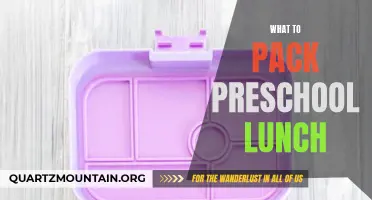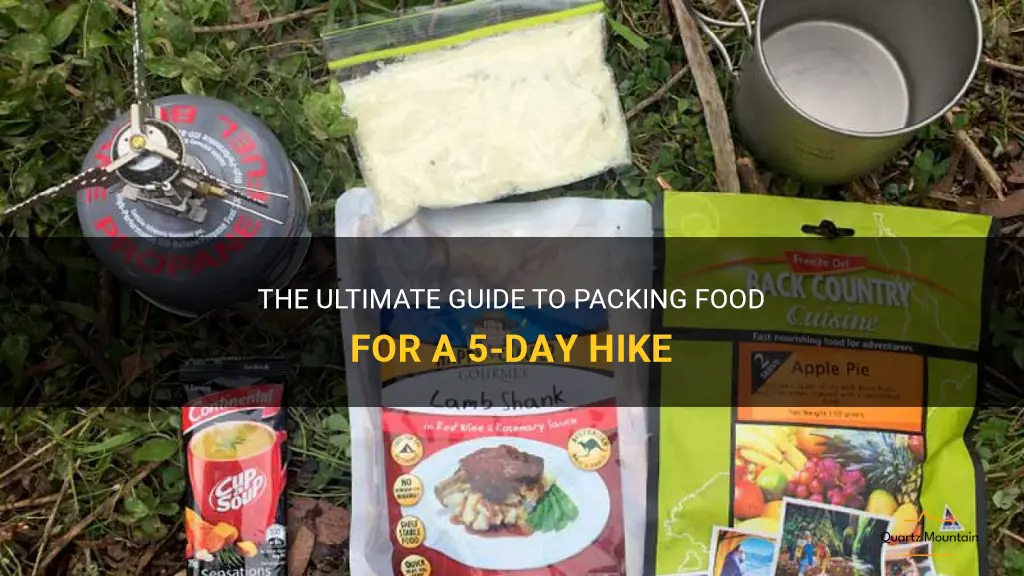
Are you planning a thrilling 5-day hike in the great outdoors, but are unsure of how to pack and prepare food for the journey? Look no further! In The Ultimate Guide to Packing Food for a 5-Day Hike, we will take you through step-by-step instructions and expert tips on how to pack nutritious and delicious meals that will keep you energized and satisfied throughout your adventure. Whether you're a seasoned hiker or a beginner, this guide will ensure that your food is conveniently stored, lightweight, and most importantly, enjoyable to eat. So grab your backpack and get ready to embark on a culinary adventure like never before!
| Characteristics | Values |
|---|---|
| Lightweight | Dehydrated meals, dried fruits, nuts, and seeds |
| High in calories | Nut butters, cheese, energy bars, trail mix |
| Long shelf life | Canned tuna, jerky, granola bars, powdered milk |
| Easy to prepare | Instant oatmeal, pre-cooked rice or pasta, couscous |
| Nutrient-dense | A mix of carbohydrates, proteins, and healthy fats |
| Resistant to spoilage | Packaged fruits, hard cheeses, cured meats |
| Compact | Freeze-dried meals, vacuum-sealed snacks, energy gels |
| Easy to pack/carry | Individually wrapped items, ziplock bags, collapsible containers |
| Versatile | Ingredients that can be easily mixed or paired with other foods |
| Hydrating | Electrolyte powders, powdered drink mixes, herbal teas |
What You'll Learn
- What are some lightweight, non-perishable food options that are suitable for a 5 day hike?
- Are there any specific dietary considerations to keep in mind when packing food for a 5 day hike?
- How many calories per day should I aim to pack for a 5 day hike?
- What are some good options for breakfast, lunch, and dinner on a 5 day hike?
- Are there any special packing techniques or containers that can help preserve the freshness and taste of the food during a 5 day hike?

What are some lightweight, non-perishable food options that are suitable for a 5 day hike?

Going on a 5-day hike means you need to carefully plan your meals, especially when it comes to lightweight and non-perishable food options. These types of foods are ideal for backpacking as they are easy to carry, do not require refrigeration, and provide the necessary energy and nutrients to sustain you during your adventure. Here are some great options to consider:
- Dehydrated Meals: Dehydrated meals are a popular choice for hikers as they are lightweight, easy to prepare, and have a long shelf life. There are many different types to choose from, including pasta dishes, rice and beans, and even whole meals like chicken and rice. Simply add boiling water, let it sit for a few minutes, and enjoy a hot and filling meal.
- Trail Mix: Trail mix is a classic hiking snack that provides a great balance of protein, healthy fats, and carbohydrates. Make your own mix with ingredients like nuts, dried fruits, seeds, and chocolate chips. Pack them in resealable bags or small containers for easy snacking on the trail.
- Jerky: Jerky is a high-protein, low-fat food that is perfect for hiking. It is lightweight, does not require refrigeration, and keeps well for days. There are many different types of jerky available, such as beef, turkey, and even vegetarian options like tofu jerky. Choose one that fits your dietary preferences and pack it in a zip-lock bag for easy access.
- Nut Butter: Nut butter, such as peanut or almond butter, is a great source of healthy fats and protein. It is delicious on its own or can be spread on crackers or bread for a more substantial snack or meal. Look for single-serving packets or transfer some into a small container to avoid carrying a bulky jar.
- Energy Bars: Energy bars are a convenient and compact option for quick and easy sustenance on the trail. Look for bars that are high in protein and low in added sugars. There are many different brands and flavors available, so find one that you enjoy and pack a variety for some variety during your hike.
- Instant Oatmeal: Instant oatmeal is a lightweight and nutritious breakfast option that only requires hot water to prepare. You can find individual packets in various flavors, or make your own by measuring out the desired amount of oats and adding any desired mix-ins like dried fruits, nuts, or spices.
- Instant Coffee or Tea: If you are a coffee or tea drinker, consider bringing instant coffee or tea bags for a morning or afternoon pick-me-up. Instant coffee granules dissolve easily in hot water, while tea bags can be steeped for a few minutes to make a warm and comforting drink.
It's important to note that while these lightweight and non-perishable food options are convenient for hiking, they do not provide all the essential nutrients your body needs over an extended period. Therefore, it's a good idea to supplement your meals with fresh fruits and vegetables when available, or consider taking a daily multivitamin to ensure you're getting all the necessary nutrients during your hike.
In conclusion, planning meals for a 5-day hike can be a challenge, but with lightweight and non-perishable food options, it becomes easier. Dehydrated meals, trail mix, jerky, nut butter, energy bars, instant oatmeal, and instant coffee or tea are all excellent choices for a long hike. Remember to balance your diet and supplement with fresh fruits and vegetables when possible. Happy hiking!
Essential Packing Guide for the Kentucky Youth Assembly
You may want to see also

Are there any specific dietary considerations to keep in mind when packing food for a 5 day hike?
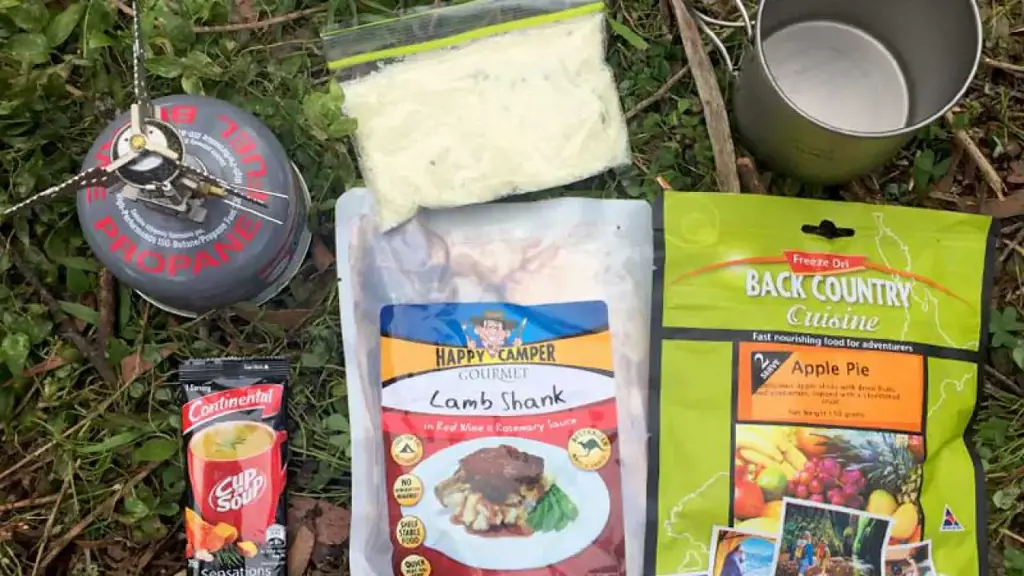
When embarking on a 5 day hike, it is crucial to ensure that you are properly nourished and fueled for the physical demands of the journey. Packing the right food is essential to provide your body with the energy it needs to keep going. Here are some specific dietary considerations to keep in mind when packing food for a 5 day hike.
- Calorie Intake: Hiking requires a significant amount of energy, so it is important to pack high-calorie foods. Aim for calorie-dense options such as nuts, dried fruits, energy bars, and jerky. Look for foods that are lightweight but still pack a nutritional punch.
- Carbohydrates: Carbohydrates are your body's primary energy source, so it is important to include ample amounts in your hiking meals. Pack foods like whole grains, pasta, oats, and trail mix to provide sustained energy during your hike.
- Protein: Protein helps repair and rebuild muscle, so it is important to include protein-rich foods in your hiking diet. Pack items like canned tuna, dehydrated meats, nuts, and protein bars to ensure you are meeting your protein needs.
- Hydration: Staying hydrated is key to maintaining your energy levels and preventing dehydration. Pack plenty of water, as well as electrolyte-rich drinks or powders to replenish electrolytes lost through sweating.
- Fruits and Vegetables: While fresh produce may not be practical for a 5 day hike, it is still important to get your vitamins and minerals. Pack dehydrated fruits and vegetables to ensure you are getting some nutritional value from your meals.
- Meal Planning: Plan your meals ahead of time to ensure you have enough food for the duration of your hike. Consider factors such as weight, packability, and shelf stability when choosing your meals. Preparing some meals in advance and vacuum sealing them can help save space and keep your food fresh.
- Snacks: Snacks can provide quick bursts of energy throughout the day. Pack snacks that are easy to eat on the go, such as granola bars, trail mix, or energy gels.
- Special Dietary Needs: If you have any special dietary needs or allergies, make sure to pack food that accommodates those requirements. Consider consulting with a nutritionist or dietitian for personalized recommendations.
In addition to the above considerations, it is important to pack food that you enjoy eating. Being on a multi-day hike can be physically and mentally challenging, so having food that you look forward to can provide a much-needed morale boost. Remember to pack foods that are culturally appropriate as well, so you can fully enjoy your meals in the wilderness.
In conclusion, packing the right food is crucial for a successful 5 day hike. Consider the calorie intake, carbohydrates, protein, hydration, fruits and vegetables, meal planning, snacks, and any special dietary needs. By carefully planning your meals and choosing nutrient-dense foods, you can ensure that you are properly fueled and nourished during your hike.
Pine Cove Towers: The Essential Packing List for a Memorable Stay amidst Nature's Beauty
You may want to see also

How many calories per day should I aim to pack for a 5 day hike?
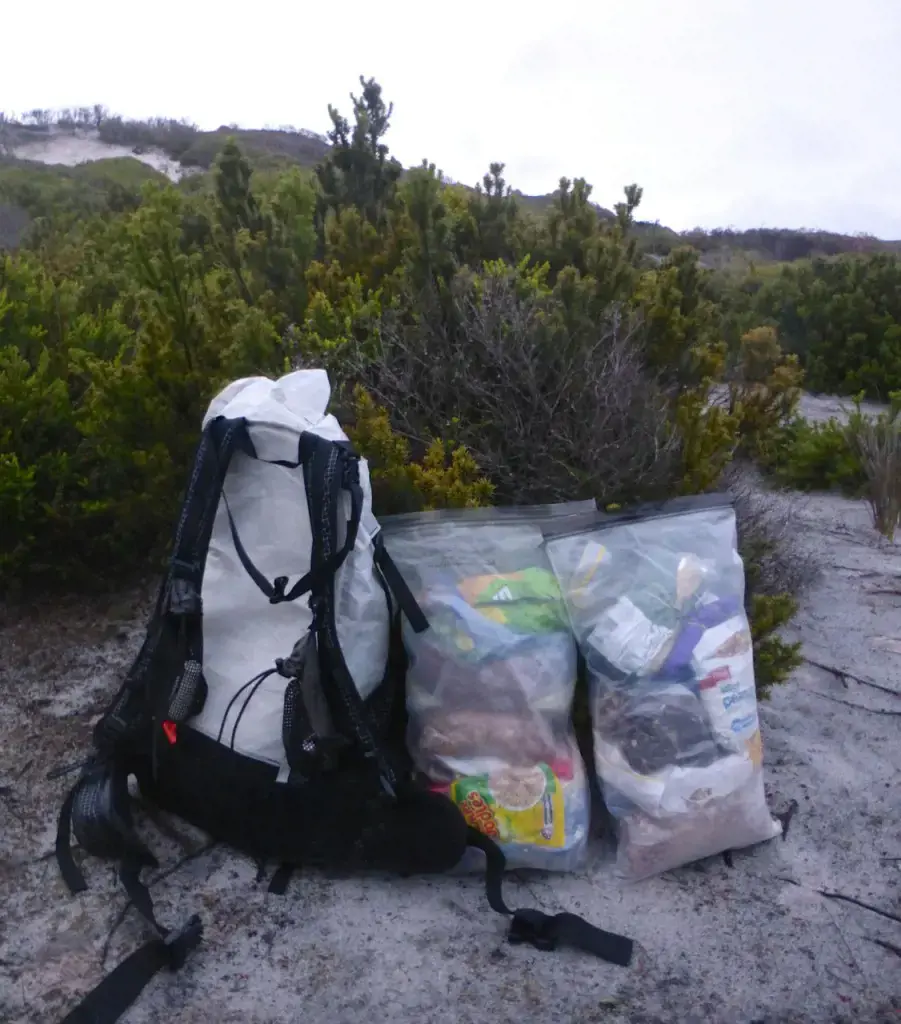
When embarking on a challenging 5-day hike, it is crucial to fuel your body with the right amount of calories to ensure you can sustain your energy levels throughout the journey. The number of calories you need per day will depend on various factors such as your weight, age, sex, metabolism, activity level, and hiking conditions. In this article, we will provide some guidance on how to determine the appropriate calorie intake for a 5-day hike.
- Consider your baseline calorie needs: Firstly, you need to be aware of your baseline calorie needs, which is the amount of energy your body requires to perform basic functions while at rest. On average, adult males need around 2500-3000 calories per day, while adult females require about 2000-2500 calories per day. These numbers serve as a starting point but will be adjusted based on the demands of the hike.
- Factor in activity level: Hiking is a physically demanding activity, and you'll be burning significantly more calories than your sedentary baseline. To estimate how many additional calories you'll need, consider your activity level. Moderate hiking typically burns about 400-600 calories per hour, whereas more strenuous uphill hiking can burn up to 800 calories per hour. Multiply this calorie burn rate by the number of hours you plan to hike each day to get a rough estimate of the additional calories burned.
- Adjust for weight and metabolism: Your weight and metabolism also play a role in determining your calorie needs. Generally, a heavier person requires more energy to move their body weight and will burn more calories. Additionally, individuals with faster metabolisms tend to burn calories more quickly. If you are on the heavier side or have a fast metabolism, you may need to increase your calorie intake accordingly.
- Account for hiking conditions: The intensity of your hike and the environmental conditions can affect your calorie needs as well. If you're hiking in colder temperatures, your body will burn more calories to keep warm. Similarly, hiking at higher altitudes requires more energy due to the thinner air. Steep and challenging terrains also increase calorie burn compared to flat, easy trails. Take these factors into account and adjust your calorie intake accordingly.
- Consult a sports nutritionist or dietitian: If you want a more precise estimation tailored to your specific needs, it is advisable to consult a sports nutritionist or registered dietitian. They can take into account all the individual factors mentioned above and provide you with a personalized calorie recommendation for your 5-day hike.
In conclusion, determining the appropriate calorie intake for a 5-day hike requires considering your baseline calorie needs, activity level, weight, metabolism, and hiking conditions. By carefully estimating these factors and adjusting your calorie intake accordingly, you can provide your body with the fuel it needs to tackle the challenges of the hike while maintaining your energy levels. Remember, it's better to slightly overestimate your calorie needs rather than to not consume enough, as inadequate nutrition can lead to fatigue, muscle breakdown, and compromised performance.
Essential Gear for Alaska Seining: What to Pack for Success
You may want to see also

What are some good options for breakfast, lunch, and dinner on a 5 day hike?
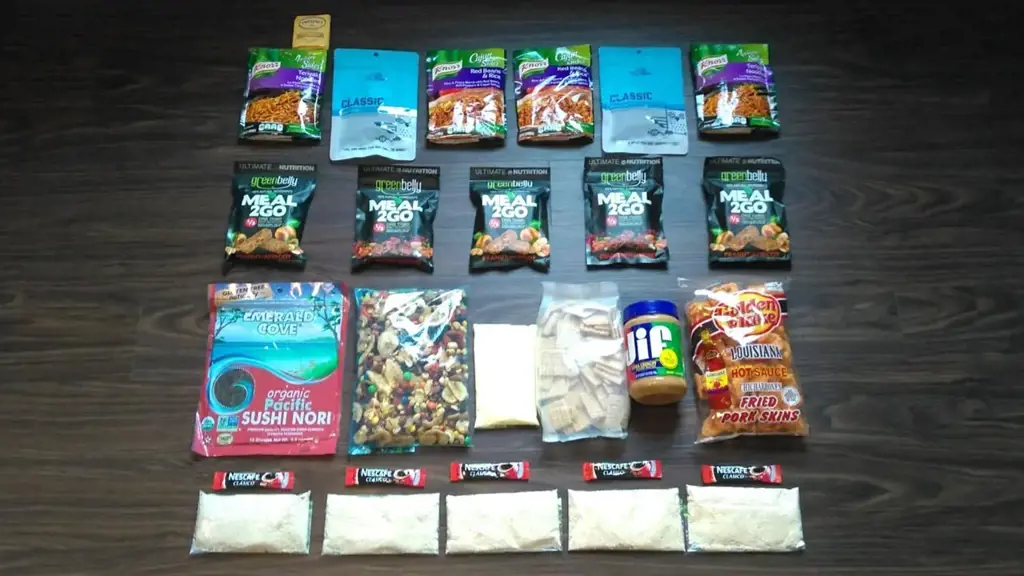
When going on a 5-day hike, it is important to plan your meals carefully to ensure you have enough energy to sustain you throughout the trip. Here are some good options for breakfast, lunch, and dinner that are nutritious, lightweight, and easy to prepare on the trail.
Breakfast:
- Instant oats: Packets of instant oats are lightweight and can be easily cooked by adding boiling water. They provide a good source of carbohydrates and fiber, which will keep you feeling full and energized.
- Energy bars: Choose energy bars that are high in protein and complex carbohydrates. Look for bars that contain nuts, seeds, and dried fruits for added nutrients. These bars are quick and easy to eat on the go, making them a convenient breakfast option.
- Powdered eggs: Powdered eggs are a lightweight and protein-packed option for a hearty breakfast. Simply rehydrate the eggs with water and cook them over a portable stove. Add some dried vegetables and cheese for extra flavor.
Lunch:
- Wraps: Tortilla wraps are a versatile option for lunch. Fill them with canned tuna, chicken, or hummus for a protein boost. Add some fresh vegetables like lettuce, tomatoes, and cucumbers for extra nutrients and crunch.
- Peanut butter and jelly sandwiches: Peanut butter is a great source of healthy fats and protein, making it a filling lunch option. Pair it with jelly for some added sweetness and carbohydrates. Opt for whole-wheat bread for added fiber.
- Pre-packaged meals: There are many pre-packaged meals available specifically designed for hiking and backpacking. These meals often only require adding boiling water and provide a well-balanced meal with a mix of protein, carbohydrates, and fats. Look for options that suit your dietary preferences and choose ones with a variety of flavors for some variety throughout the trip.
Dinner:
- Dehydrated meals: Dehydrated meals are a popular choice for dinner on a backpacking trip. These meals are lightweight, easy to prepare, and come in a variety of flavors and cuisines. Simply add boiling water and wait for them to rehydrate before enjoying a hot and satisfying meal.
- Pasta or rice dishes: Pasta and rice are inexpensive, lightweight, and can be cooked quickly on a portable stove. Add some dehydrated vegetables, spices, and a protein source like canned chicken or beef jerky for a complete and hearty meal.
- Soup or stew: Preparing a pot of soup or stew is a great way to use up any leftover ingredients and create a warm and comforting dinner on the trail. Dehydrate your own soup or stew by drying out cooked ingredients at home or opt for pre-packaged soup mixes that only require adding boiling water.
Remember to pack a variety of snacks to munch on throughout the day, such as nuts, dried fruits, and energy bars, to keep your energy levels up. It is also important to stay hydrated, so make sure to bring along a water filter or purifier to have access to clean drinking water. Preparing and packing your meals ahead of time will help you make the most of your 5-day hike and keep you fueled for the adventures ahead.
What Are the Acceptable Colors to Wear for Backpacks?
You may want to see also

Are there any special packing techniques or containers that can help preserve the freshness and taste of the food during a 5 day hike?
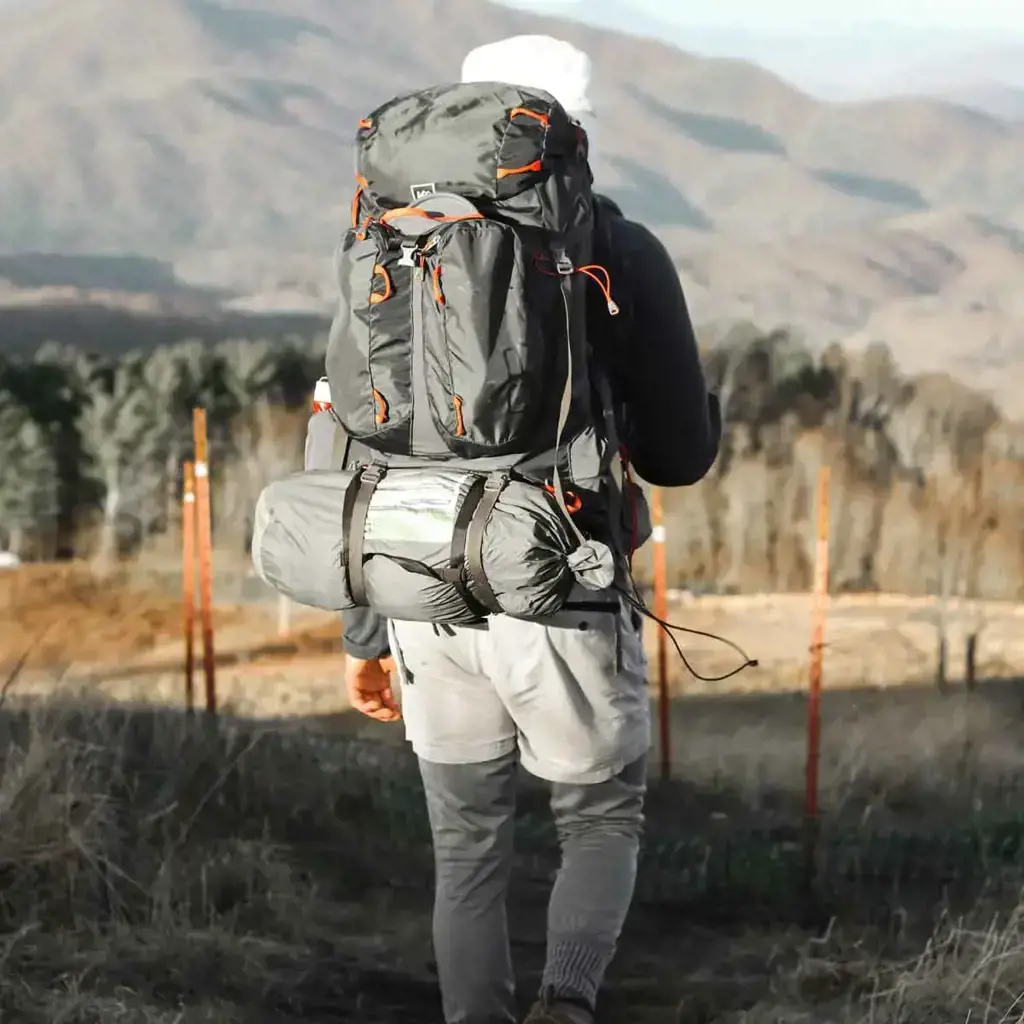
When embarking on a 5-day hike, it is important to pack food that will not only provide sustenance but also maintain its freshness and taste throughout the duration of the trip. This can be challenging, as food is susceptible to spoilage due to factors such as temperature, moisture, and exposure to air. However, there are several special packing techniques and containers that can help preserve the freshness and taste of food during a multi-day hike.
One technique to preserve food is using vacuum-sealed bags. Vacuum sealing removes the air from the bag, reducing the likelihood of food spoilage. This method is particularly useful for items such as deli meats, cheeses, and fruits. By eliminating air contact, the growth of bacteria and mold is greatly inhibited, leading to extended freshness.
Another effective packing technique is freeze-drying or dehydrating food. Freeze-dried or dehydrated meals can be easily rehydrated with boiling water on the trail, providing a lightweight and space-saving meal option. These meals are specifically designed to retain their nutritional value and flavor for extended periods. Freeze-dried fruits and vegetables are also available, offering a nutritious and lightweight snack option.
In addition to packing techniques, the choice of containers can also play a significant role in preserving the freshness and taste of food. Using insulated containers or coolers can help regulate the temperature of perishable items such as raw meat, dairy products, and fresh produce. These containers are typically lined with foam or other insulating materials to prevent temperature fluctuations, reducing the risk of spoilage.
When storing food in containers, it is important to pack it tightly and minimize any empty spaces. Empty spaces allow air to circulate, promoting spoilage. Utilizing smaller containers or resealable bags for individual portions can help reduce empty spaces and maintain freshness.
Lastly, considering the duration of the hike, it is essential to pack food that has a longer shelf life. Canned goods, nut butter, granola bars, and dried fruits are examples of non-perishable food items that can withstand extended periods without refrigeration. These items can serve as backups or emergency provisions in case other perishable food items spoil.
When employing these techniques and containers, it is important to consider the weather conditions of the hike. Temperature fluctuations can impact the effectiveness of certain preservation methods. It is recommended to store food in a shaded area or utilize a reflective blanket to shield it from direct sunlight and extreme temperatures.
In conclusion, there are several special packing techniques and containers that can help preserve the freshness and taste of food during a 5-day hike. Vacuum-sealed bags, freeze-dried or dehydrated meals, insulated containers, and tight packing are all effective methods to maintain the quality of the food. Additionally, choosing food items with longer shelf lives and considering weather conditions are important factors to ensure the food remains safe and enjoyable to consume throughout the hike.
Essential Items to Pack for Your Lapland Adventure
You may want to see also
Frequently asked questions
When planning for a 5 day hike, it is important to pack food that is lightweight, non-perishable, and will provide you with enough energy to sustain you throughout the hike. Some good options to consider are dried fruits, nuts, energy bars, jerky, instant oatmeal, and freeze-dried meals. These foods are compact and lightweight, making them easy to carry in your backpack.
The amount of food you should pack for a 5 day hike will depend on your individual calorie needs, the intensity of your hike, and how much you typically eat in a day. On average, it is recommended to aim for 2,500-3,500 calories per day when backpacking. This could be achieved by packing 5-7 individual meals or 10-14 smaller snacks per day. It is always better to pack a little more food than you think you will need, as it's better to have extra calories available than to run out of energy during your hike.
To prevent your food from spoiling during a 5 day hike, it is important to store it properly. Choose foods that are packaged in airtight containers or resealable bags to keep them fresh. Consider using airtight storage containers or vacuum-sealed bags to further protect your food. It is also important to pack perishable items like fresh fruits and vegetables in separate compartments from non-perishable items to reduce the risk of contamination. If you are hiking in hot weather, it may be wise to consider bringing a small cooler or insulated bag to keep perishable items cool.
For breakfast, consider packing instant oatmeal packets, protein bars, or granola bars. These options are lightweight, easy to prepare, and will give you a good boost of energy in the morning. For lunch, choose foods that do not require cooking, such as energy bars, trail mix, or peanut butter and jelly sandwiches. These options are convenient and provide a good balance of carbohydrates, proteins, and fats. For dinner, freeze-dried meals or dehydrated camping meals are a popular choice, as they are lightweight, easy to prepare, and often have a long shelf life. Simply add boiling water and wait for the meal to rehydrate. Additionally, don't forget to pack snacks throughout the day, such as dried fruits, nuts, and jerky, to keep your energy levels up between meals.






